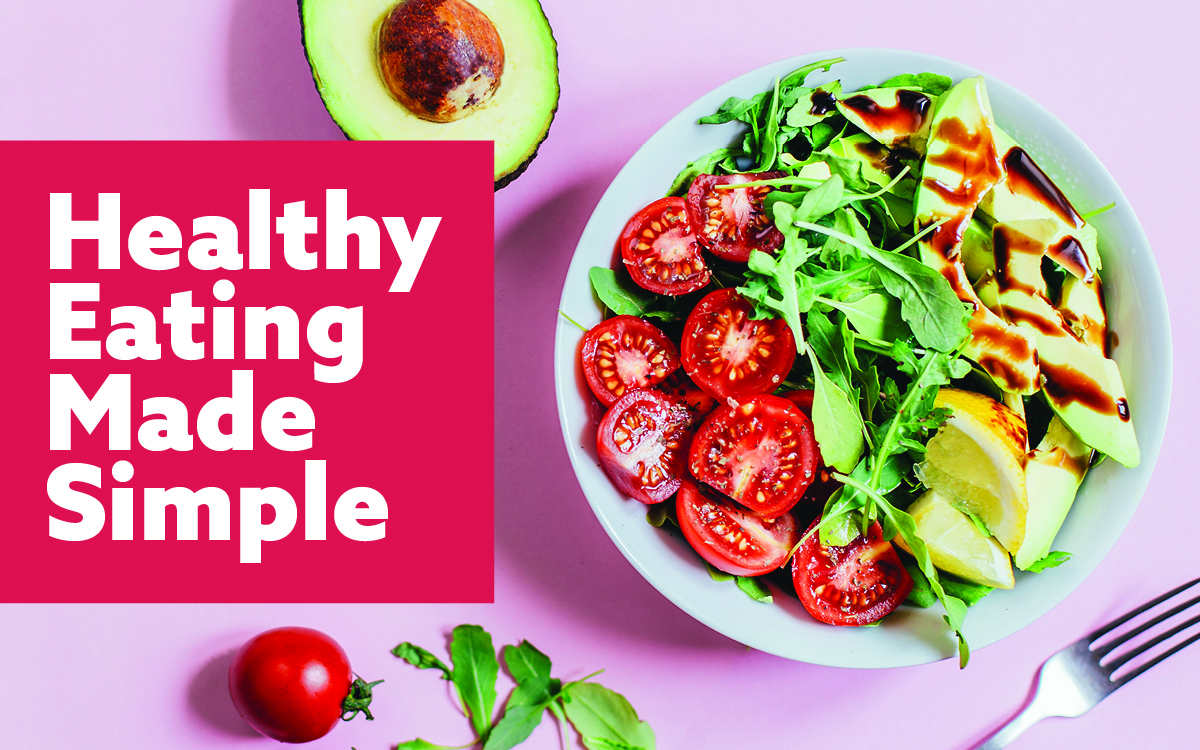
By Jennifer Callicoatte, MS, RD, LDN, CNSC, CHRISTUS Clinical Nutrition Manager
hoosing to eat healthy doesn’t have to be hard. With a bit of planning, making smart choices can be easy and very tasty. Eating healthy isn’t putting yourself or family on a diet, it’s choosing an eating routine that can improve your health and lower your risk of heart disease, stroke, or diabetes, while increasing your energy and decreasing your waistline. It doesn’t mean giving up your favorite foods but in many cases learning to appreciate them in a new way.
In planning, be mindful of the foods you’re choosing. Pay attention to the ingredients and nutrients and learn how to read labels in order to select products with the lowest amounts of sodium, added sugars, saturated and trans-fat, and hydrogenated oils. There are dozens of smart phone apps available with free tools to help dissect labeling, track macros, and progress in your healthy eating journey. Some of the popular apps with free tools include myfitnesspal, fooducate, and Carb Manager
The American Heart Association (AHA) Healthy US-Style Eating Pattern for 2,000 calories/day suggests building an eating routine to include daily servings of these items:
- Vegetables – canned (low-sodium), dried, fresh & frozen; 5 servings
- Fruits – canned (in water), dried, fresh & frozen; 4 servings
- Whole grains- barley, brown rice, millet, oatmeal, popcorn and whole wheat bread, crackers & pasta; 3-6 servings
- Dairy- low fat (1 percent) and fat-free; 3 servings
- Proteins – eggs, fish, lean meat, legumes, nuts, poultry & seeds; 1-2 servings
- Oils-canola, olive, peanut, safflower & sesame oil; 3 Tbsp
Stay away from these items or try to limit as much as possible:
- Sweetened drinks
- Salty foods
- Saturated fats and cholesterol
- Fatty or processed red meats
- Refined carbohydrates like added sugars and processed grain foods
- Full-fat dairy products
- Tropical oils such as coconut and palm oil
Everyone’s goal is different but for most, it includes losing weight. Weight loss equals eating meals that consist of fewer calories. Maintaining a healthy weight means not eating more calories than you are burning. It is worth it to add in some physical activity and exercise to help achieve your goals. Along with maintaining weight loss, exercise is great for helping relieve stress, for your heart, and it has been linked to better sleep. AHA recommends 150 minutes per week or 22 minutes of exercise each day.
Beyond weight loss, motivation can be managing a condition such as diabetes. The CHRISTUS Outpatient Diabetes Education Center offers an accredited outpatient self-management education program focused on eating healthy, blood glucose monitoring, and living with the disease.
Decide your goal and get started! Don’t overdo it, just start with a few meals a week. Cook at home! In your kitchen, you control the ingredients, how the meal is being prepared, and portion size.

Jennifer Callicoatte
MS, RD, LDN, CNSC, CHRISTUS Clinical Nutrition Manager

